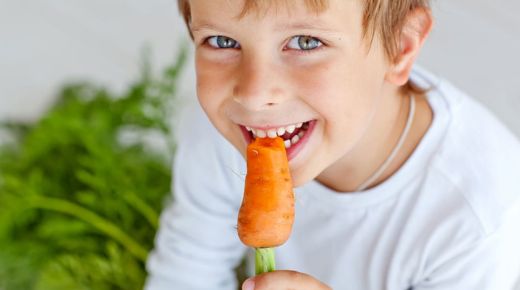If you have a child who likes to snack on junk food, it is important to help them make the switch to healthier food items. What children eat can greatly affect their oral health. Eating a balanced diet with various essential nutrients is not just important for the body but for the teeth and gums as well. The right snacks can help fight the sugars and acids that cause tooth decay.
Sugary snacks like candy, processed treats, and sweetened drinks can easily cause cavities, even if your child brushes their teeth properly. Kids think that healthy foods are not tasty, but you can change their minds by introducing snacks that are both tasty and good for dental health.
While limiting sugars and providing them with nutritious snacks is important, this still does not negate the importance of regular dental visits. A family dentistry reno can help you understand what is good and bad for your child’s teeth and provide recommendations. Meanwhile, read this blog to learn about some healthy snacks you can serve your kids.
Best snacks for promoting healthy teeth
- Cheese and yogurt.
Cheese and yogurt are tasty snacks that help your child keep up with good oral health. These foods are filled with calcium and casein, both of which are essential in strengthening tooth enamel. These are helpful in remineralizing teeth and protecting them from decay and infection.
Cheese increases the saliva production in your mouth, which helps wash away food residuals and neutralize acids in your mouth. Make sure to give your child low-sugar yogurt, as adding more sugar can lead to tooth decay and cavities.
- Raw vegetables.
Raw vegetables like carrots, cucumbers, and tomatoes are beneficial in numerous ways. These vegetables act as natural cleansers for the teeth and gums.
Chewing these snacks increases saliva production and scrubs bacteria and food debris away from your mouth. Moreover, cucumbers are rich in water and will keep your child hydrated.
- Fresh fruits.
Fresh fruits like strawberries and apples have high water content and are loaded with fibers. Apple works as a natural toothbrush because of its crunchy nature and helps remove plaque from your teeth. The rich water content also increases saliva production and washes away bacteria.
Additionally, these fruits contain natural sugar, which is less harmful than sugar processed in the factories. This low-calorie nature makes them a healthy option for your child’s sweet cravings.
- Nuts and seeds.
Nuts and seeds are filled with fats, protein, calcium, and phosphorus, all of which are important for maintaining good dental health. For example, almonds, which are rich in minerals, neutralize acid in your mouth and strengthen tooth enamel.
Walnuts and seeds are low in sugar and provide various health benefits due to their high nutrient value.
- Whole grains.
Whole grains such as oatmeal can provide you with loads of energy. These healthy snacks are low in sugar and help provide your child with sufficient energy to carry out the day. Whole grains help in better digestion and also balance the sugar levels in your body.
- Water.
Lastly, the best beverage that protects your child’s smile is water. Drinking water washes away leftover food particles and bacteria that can lead to plaque accumulation and tooth decay.
It keeps your child hydrated and promotes saliva production, which is essential for maintaining good oral health.
How to encourage kids into healthy snacking habits?
If you want your child’s smile to last long, encourage them into healthy snacking habits. To make these snacks appealing, consider cutting them into different fun shapes like triangles, hearts, and circles using cookie cutters.
Creating colorful snack platters with a variety of fruits and veggies not only makes them visually appealing but also encourages kids to try new options. Involve kids in snack preparation, such as allowing them to combine their favorite fruits or vegetables on a platter.
Schedule an appointment today!
If your child is experiencing toothache while eating their favorite meal, consult with a family dentist today to know the underlying cause.




